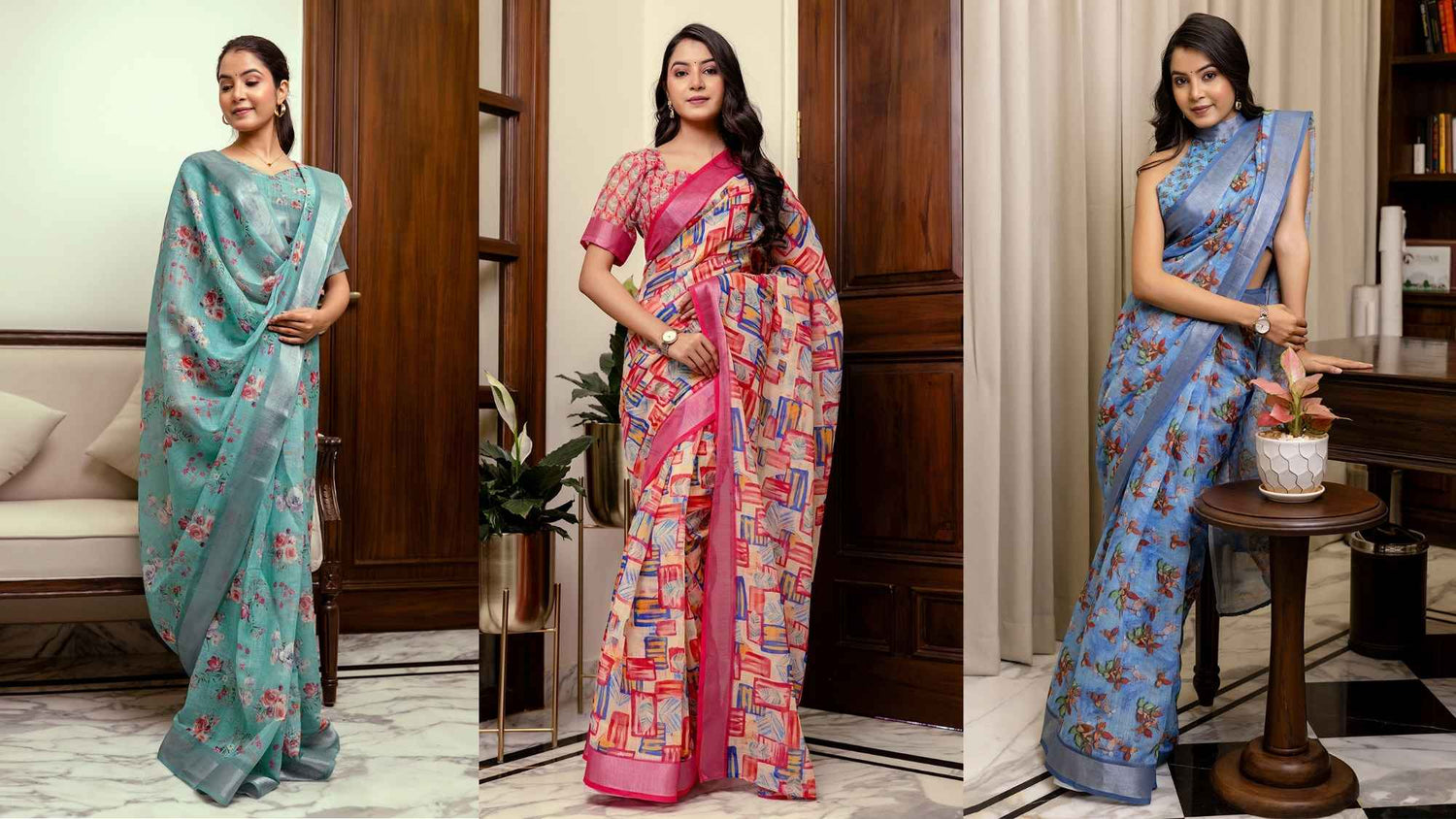In countless Assamese homes, the arrival of Bihu brings a special ritual. Mothers and grandmothers carefully unwrap their precious Silk Sarees, the fabric often preserved with natural turmeric. These golden-hued treasures with intricate motifs aren't just clothing, they are a piece of heritage, celebration and connection.
The relationship between Bihu and Assam Silk Sarees runs deep, like the threads woven into its fabric, particularly Mekhela Chador
In this blog, we will understand the importance of Mekhela Chador and its significance in Assamese culture, how to find authentic assam silk saree, and how to style it.
What Makes the Mekhela Chador Special?
The Mekhela Chador differs significantly from regular sarees. This clever two-piece outfit has stumped many first-time wearers over the years. The bottom part wraps like a skirt (mekhela), while the upper portion (chador) drapes over the shoulder.
Local women often say the design evolved to allow freedom of movement during Bihu dances while maintaining elegant coverage. Most prefer pure Assam Silk Sarees for their Mekhela Chador because nothing else captures light quite the same way when performing the traditional Bihu dance steps.
The local silk varieties each tell their own stories:
-
Muga silk shimmers with that unmistakable gold tone that catches sunlight beautifully.
-
Pat silk feels incredibly smooth and cool against skin - perfect for long celebration days.
-
Eri silk offers warmth during cooler evenings, with a slightly coarser but equally beautiful texture.
Anyone who has touched an authentic Assam Silk Saree notices immediately how lightweight yet strong it feels. The weavers achieve this remarkable balance through heirloom techniques passed down through generations.
The Significance of Motifs
A close look at an Assam Silk Saree reveals it's actually communicating through patterns. The diamond shapes (kabutar) represent prosperity. The jaapi (traditional hat) motifs symbolize hospitality. The kingkhap pattern with its temple-like design connects the wearer to spiritual traditions.
Older women in Assamese villages can often "read" sarees—identifying their origin just by examining their patterns. "This border style comes from Sualkuchi," or "These peacock designs are definitely from eastern Assam." they might explain.
These aren't random decorations. They form a visual code that women have shared for centuries, connecting them across villages, generations, and life experiences.
Wearing Assam Silk Saree During Bihu
Today's celebrations blend tradition with practicality. Many women still prefer authentic Mekhela Chadors for important Bihu functions, while others choose contemporary Assam Silk Sarees that capture the same essence with easier draping.
Even far from Assam, the silk saree or Mekhela Chador becomes a representative of culture - starting conversations and building bridges between communities.
Finding Authentic Silk Sarees at Sudathi
Sudathi began with a simple mission: Make fashion affordable for everyone.
While traditional Assam Silk Sarees from specialized weavers can cost thousands, partnerships with vendors have made it possible to deliver blended silk sarees at affordable rates.
Customers appreciate that the collection includes:
-
Genuine silk blends with traditional Assamese motifs
-
Contemporary colors alongside classic designs
-
Easy-care options that maintain the look of Saree
-
Versatile pieces that work for festivals and everyday occasions
How to Style Your Assam Silk Saree
The beauty of Assam silk sarees lies in their versatility. Whether you're dressing for Bihu or another special occasion, these sarees offer a perfect blend of tradition and elegance.
-
Start with simple gold jewelry. Light pieces like small jhumkas or a delicate necklace work best, as they don’t overpower the intricate patterns and woven texture of the saree.
-
Choose a contrasting blouse that complements the saree's body but highlights its border. A well-matched blouse can elevate the entire look, drawing attention to the craftsmanship and colors.
-
Style your hair with fresh white flowers like jasmine. It adds a touch of festivity and tradition, creating a graceful and refreshing appearance perfect for cultural events.
-
Keep the makeup minimal. A clean base with a small red bindi and a swipe of red lipstick is often all you need. It keeps the focus on the saree while still bringing out a festive glow.
-
Since Assam silk sarees have a natural texture and beautiful fall, they don’t need heavy accessories to make an impact. Let the fabric speak for itself.
Final Thought
When wrapped in Assam Silk Sarees, a woman isn't just wearing fabric. She's continuing a story that began centuries ago in the silkworm farms and looms of Assam.
During Bihu, this connection feels strongest. Whether celebrating in Guwahati or Gurugram, the silk threads connect to a culture that is beyond time and distance.
Shop on Sudathi today to find the perfect Silk Saree, with most affordable prices. Celebrate Bihu with both tradition and affordability—no compromises needed.







